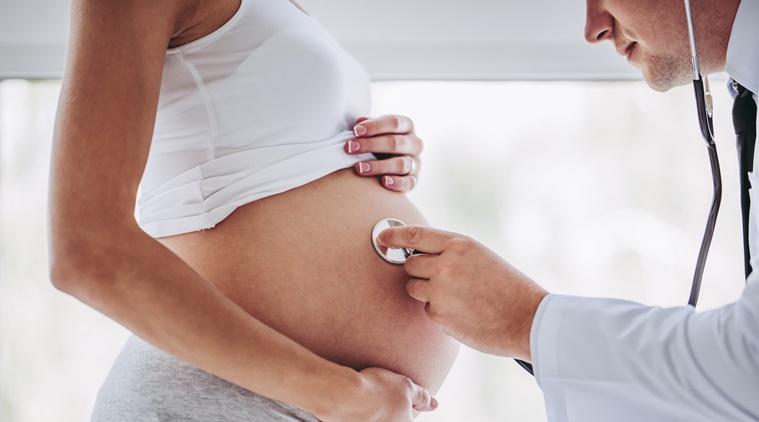Facts about cerebral palsy and risk factors during pregnancy
There are many symptoms during pregnancy that may cause damage to the developing child’s brain, which can later lead to cerebral palsy. The disease is considered to be mostly congenital, which makes it all the more important for the mother to be extra cautious.
 Pregnant women must take regular prenatal checkups to detect cerebral palsy. (Source: Getty Images)
Pregnant women must take regular prenatal checkups to detect cerebral palsy. (Source: Getty Images)
By Dr Amar Singh Chundawat
According to reports from the Indian Institute of Cerebral Palsy, approximately 33,000 people have cerebral palsy, though worldwide the incidence of cerebral palsy is one for every 500 live births. In India, 13 out of 14 cases of cerebral palsy are developed while the mother is pregnant or during the first month after birth.
From day one till the end of the pregnancy is a journey of a child and woman, where they grow together, sleep and eat together. During the pregnancy, the woman goes through a lot of stress, mood swings and pain. There are many symptoms during pregnancy that may cause damage to the developing child’s brain, which can later lead to cerebral palsy. Thyroid problems, seizures, infections/viruses such as chicken pox, rubella, cytomegalovirus, multiple births, assistive reproductive technology and infertility treatments, etc, are some of the major causes which lead to cerebral palsy in children. Cerebral palsy is considered to be mostly congenital, which makes it all the more important for the mother to be extra cautious.
Types of cerebral palsy:
- Spastic Cerebral Palsy
- Dyskinetic Cerebral Palsy
- Mixed Cerebral Palsy
- Ataxic Cerebral Palsy
Causes of cerebral palsy during pregnancy:
- Seizures during pregnancy
- Hormonal changes
- Infections during pregnancy
- Blood diseases
- Infertility treatments
- Low birth weight
- Injuries to the brain
- Premature birth
- Brain damage
- Birth complications
Precautions to be taken during pregnancy
According to experts, CP is a developmental disorder which might not get detected during pregnancy, though doctors usually monitor developmental milestones of the child. Pregnant women can take some precautions, such as:
- Keeping hands clean
- Regular prenatal care
- Regular checkups with the doctor
- Protection from flu
- Discuss blood compatibility with the doctor
- Protect herself from Rubella
- Follow a controlled lifestyle (no smoking, alcohol or illicit drugs)
- Staying aware about healthy pregnancy
- Taking vaccinations on time
- Awareness about the risks of multiple births
Cerebral palsy is not the end of life. The life expectancy in patients who have cerebral palsy is normal. The patient and family will require a lot of counselling, physical therapy, educational support and occupational therapy to deal with cerebral palsy. Thus, awareness about this disease plays a key role as there is no definitive treatment for it.
(The writer is Chief Surgeon at Narayan Seva Sansthan.)
Photos



- 01
- 02
- 03
- 04
- 05



























